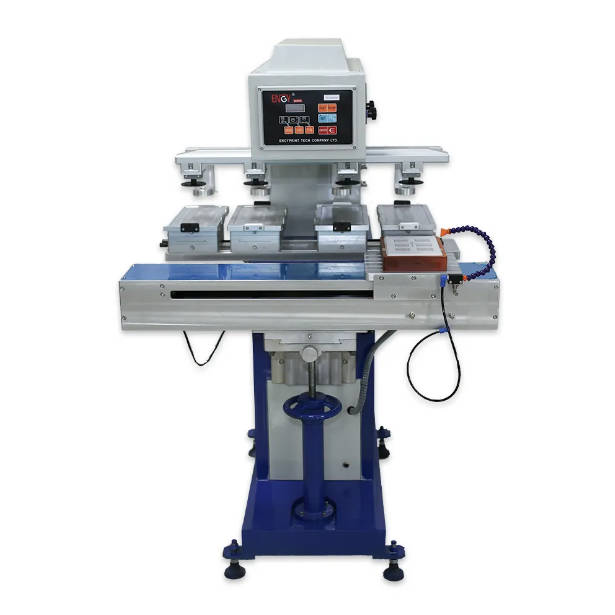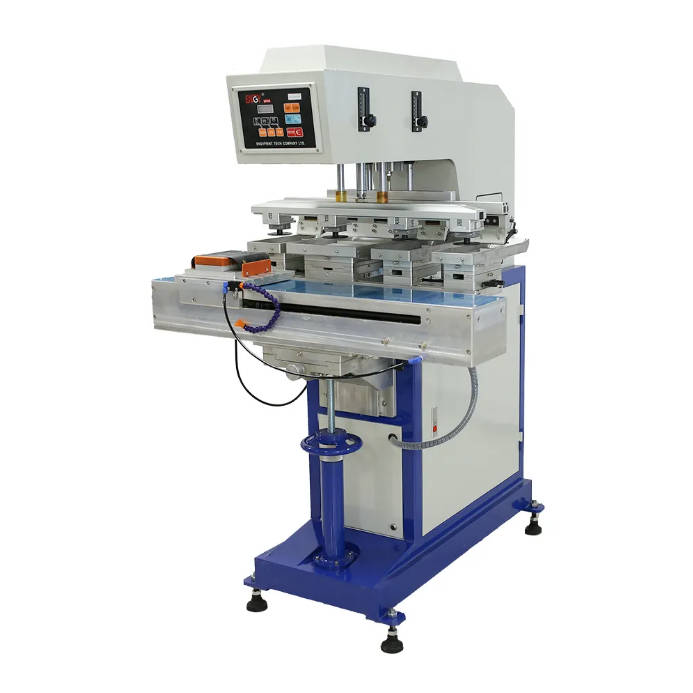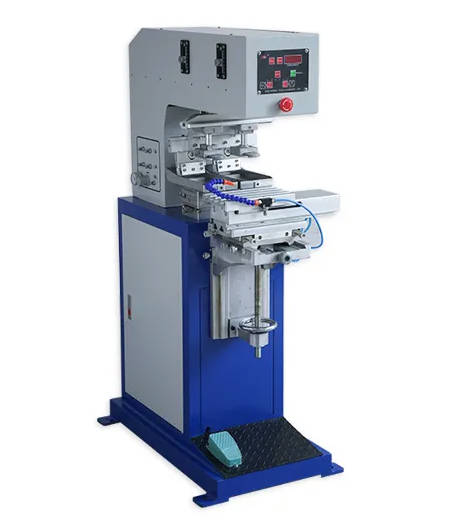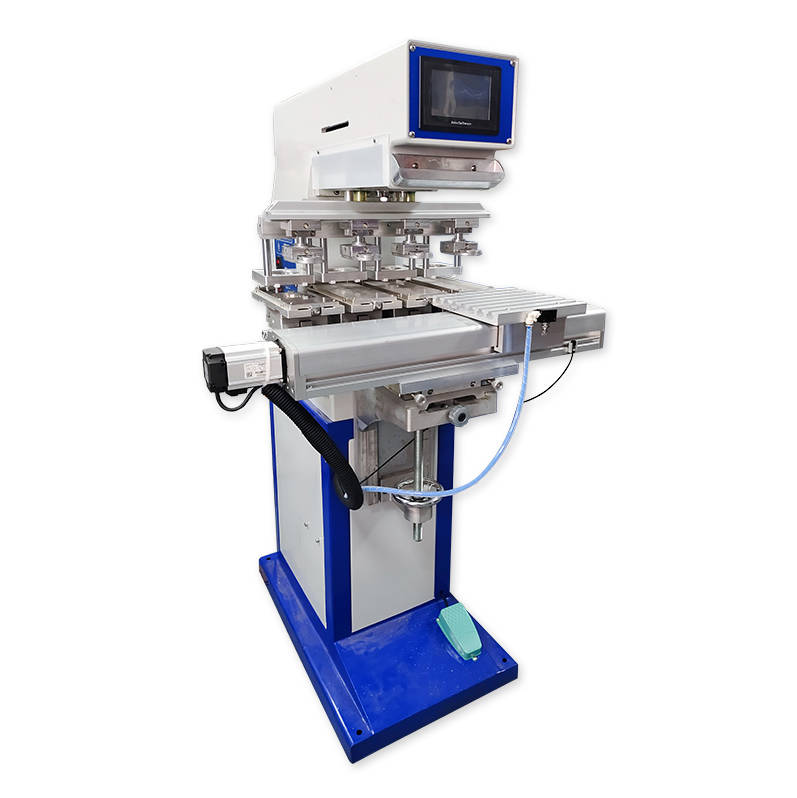I. Introduction: The Critical Role of Marking in Modern Manufacturing
In today’s competitive market, a product is more than just its function; it’s an identity. The branding and marking on a product serve as its face, communicating quality, origin, and authenticity. Across critical industries like automotive, electronics, and medical devices, marking is not merely an aesthetic choice—it’s a fundamental requirement for product identification, traceability, and compliance. From a serial number on a circuit board to a logo on a medical instrument, these marks ensure safety, prevent counterfeiting, and build brand recognition.
Two of the most prominent and powerful technologies leading this charge are pad printing and laser marking. While both achieve the goal of applying a mark to a part, they do so through fundamentally different processes, each with a unique set of strengths, weaknesses, and ideal applications. This creates a common dilemma for manufacturers, engineers, and business owners: which technology is the right investment?
This article provides a professional, in-depth comparison of pad printing and laser marking. It is specifically designed to address the common queries from users seeking pad printing machines, helping them thoroughly evaluate whether this versatile technology is the optimal choice for their needs when compared to the precision of laser marking. We will dissect the processes, compare their capabilities, and provide clear guidance to help you make an informed decision for your branding and marking requirements.

II. Understanding Pad Printing: The Master of Irregular Surfaces
What is Pad Printing?
Pad printing is an indirect offset printing process that uses a soft, flexible silicone pad to transfer a 2D image (ink) from an etched plate, known as a cliché, onto a 3D object. Its unique ability to conform to irregular, curved, and textured surfaces makes it an incredibly versatile solution for a vast range of products that are impossible to mark with traditional printing methods. Think of it as a high-tech, precision rubber stamp capable of delivering crisp, high-quality images onto almost any shape.
Key Components and the Printing Process
The elegance of pad printing lies in its mechanical simplicity and precision engineering. The process involves a coordinated system of key components:
- Pad Printing Machine: The core of the operation, which can range from manual benchtop units to fully automated, multi-color industrial systems. The machine controls the entire mechanical sequence.
- Silicone Pads: These are the heart of the process. Made from a special silicone material, pads come in various shapes, sizes, and durometers (hardness) to match the specific application. The pad’s flexibility allows it to wrap around a product’s surface for a complete ink transfer.
- Inks and Solvents: Specialized inks are formulated for adhesion to specific substrates, from plastics and metals to glass and wood. Solvents are used to thin the ink to the correct viscosity and to facilitate a “tacky” surface on the ink film just before transfer.
- Cliché (Printing Plate): This is a thin steel or polymer plate where the desired artwork is chemically etched to a shallow depth (typically 20-25 microns). This etching holds the ink, forming the image to be transferred.
The pad printing cycle is a swift and precise mechanical ballet:
- Step 1: Inking: An ink cup (a sealed cup with a sharp ring edge) or an inkwell/spatula system floods the etched cliché with ink.
- Step 2: Doctoring: The edge of the ink cup or a doctor blade scrapes across the cliché, removing all excess ink from the surface and leaving ink only within the etched artwork. The solvent begins to evaporate, making the ink’s surface tacky.
- Step 3: Pickup: The silicone pad presses down onto the cliché. Its soft surface deforms, pushing air out and allowing it to pick up the tacky ink film from the etching.
- Step 4: Transfer: The pad, now carrying the ink image, moves over to the product and presses down onto it. It rolls slightly as it compresses, smoothly transferring the ink layer from the pad to the substrate.
- Step 5: Repeat: The pad lifts, returning to the cliché for the next cycle, which can repeat in as little as a second.
Common Applications of Pad Printing
The versatility of pad printing has made it a go-to technology in countless industries. It is the ideal choice for:
- Promotional Products: Logos on golf balls, pens, USB drives, and mugs.
- Automotive Industry: Marking on dashboard buttons, control dials, and engine components.
- Medical Devices: Applying measurement markings, logos, and instructions on syringes, catheters, and surgical tools.
- Electronics: Branding on keyboards, remote controls, and electronic housings.
- Toys and Apparel: Decorating toy figures, applying logos to sporting goods, and printing care labels directly onto garments.
Its ability to handle high-volume production and apply multi-color designs in a single process makes it an economic powerhouse for mass manufacturing.
III. Understanding Laser Marking: The Pinnacle of Precision and Permanence
What is Laser Marking?
Laser marking is a non-contact process that utilizes a focused beam of light (a laser) to permanently alter the surface of a material, creating high-contrast marks without the use of inks, solvents, or other consumables. The laser energy interacts with the substrate to produce a permanent mark through several methods, including ablation, annealing, engraving, or foaming, depending on the material and laser type. It is a digital, direct-to-part marking method renowned for its incredible precision, speed, and durability.
The Key Process of Laser Marking
Unlike the mechanical nature of pad printing, laser marking is entirely driven by software. The process is clean, fast, and highly automated:
- Design Creation: The desired mark (logo, text, barcode, QR code, or serial number) is created in a software program.
- Parameter Setting: The operator sets parameters like laser power, speed, frequency, and focus based on the material being marked. Different materials require different settings for optimal results.
- Marking Execution: The laser beam is directed by computer-controlled mirrors (galvanometers) that guide it with extreme precision across the product’s surface, tracing the design. The laser fires in short, high-energy pulses, altering the material at the focal point.
There are several types of lasers used, each suited for different materials:
- Fiber Lasers: The most common type, ideal for marking metals, plastics, and ceramics. They are known for their long lifespan and high efficiency.
- UV Lasers: Operating on a shorter wavelength, these “cold marking” lasers are perfect for sensitive materials like certain plastics, silicon, and glass, as they minimize thermal stress on the part.
- CO2 Lasers: Best suited for organic materials like wood, paper, glass, and some plastics.
Common Applications of Laser Marking
Laser marking is the preferred choice in industries where permanence, traceability, and precision are non-negotiable:
- Aerospace and Defense: Part serialization and identification for complete traceability.
- Medical and Surgical: UDI (Unique Device Identification) marking on implants and surgical instruments that must withstand repeated sterilization.
- Electronics and Semiconductors: Marking tiny components, wafers, and circuit boards with microscopic codes.
- Automotive: VIN number engraving, component tracking, and “day-night” marking on backlit buttons.
- Jewelry and High-End Goods: Hallmarking precious metals and branding luxury products with fine, elegant details.
IV. Key Differences in Technology: Pad Printing vs. Laser Marking
To truly understand which technology fits your needs, it’s essential to compare them side-by-side across several critical performance metrics.
| Feature | Pad Printing | Laser Marking |
| Process | Contact-Based: A physical silicone pad touches the product to transfer ink. It’s a mechanical, indirect offset process. | Non-Contact: A beam of light alters the material surface. It’s a digital, direct-to-part process with no physical contact. |
| Material Compatibility | Extremely Versatile: Excellent for irregular, curved, textured, and soft surfaces. Works on almost any material with the right ink (plastics, metals, glass, ceramics, wood, rubber). | Highly Effective but More Selective: Best on flat or slightly curved surfaces. Can struggle with highly reflective metals (without pre-treatment) or very soft materials. Different laser types are needed for different material classes (e.g., fiber for metals, CO2 for organics). |
| Precision and Quality | Good to Excellent: Can produce sharp, multi-color images. However, precision is limited by pad/plate quality and can have slight variations. Not ideal for micro-text or extremely intricate designs. | Superior Precision: Capable of creating extremely fine details, micro-text, and complex graphics with perfect repeatability. Quality is consistent and digitally controlled. |
| Speed and Efficiency | Faster for High-Volume Runs: In automated multi-color setups, pad printing can achieve very high throughput (thousands of parts per hour) for the same repeating design. | Faster for Customization and Low-Mix: Extremely fast for individual marks and quick design changes (no tooling needed). Overall speed depends on the complexity and size of the mark. Better suited for high-mix, low-volume or serialized production. |
| Durability of Mark | Variable: Durability depends entirely on the ink’s adhesion to the substrate. It can be very durable with proper ink chemistry and curing but is susceptible to abrasion, chemicals, and fading over time. | Permanent: The mark is created by physically altering the material itself (engraving, changing color, etc.). It is as permanent as the material and highly resistant to wear, chemicals, heat, and UV exposure. |
| Environmental Impact | Higher Impact: Involves consumables like inks, solvents, pads, and plates, which generate waste and VOCs (Volatile Organic Compounds) that require proper handling and disposal. | Cleaner and Greener: A “green” technology with no consumables. The only byproducts are fumes/particulates from the ablated material, which are handled by a fume extraction system. Lower energy consumption in many cases. |
V. Pros and Cons of Pad Printing
Pros of Pad Printing
- Unmatched Versatility on Surfaces: The single greatest advantage of pad printing is its ability to print high-quality images on curved, uneven, textured, and recessed surfaces. The flexible silicone pad conforms to almost any shape, making it the only viable solution for many products.
- Excellent Multi-Color Capability: Pad printing machines are readily available in multi-color configurations (2, 4, 6, or more colors). They can apply complex, registered multi-color logos and graphics in a single machine cycle, which is often more cost-effective and faster than other methods for color work.
- Cost-Effective for High-Volume Production: For large production runs of the same design, pad printing offers a lower cost-per-part. The machines run at high speeds, and while there are consumable costs, the overall efficiency in mass production makes it very economical.
- Lower Initial Equipment Cost: Generally, the initial capital investment for a high-quality pad printing machine is significantly lower than that of an industrial laser marking system, making it more accessible for small businesses or budget-conscious operations.
Cons of Pad Printing
- Requires Consumables: The process is dependent on inks, solvents/hardeners, silicone pads, and clichés. This translates to ongoing operational costs, inventory management, and regular reordering.
- Less Durable Marks: The mark’s permanence is based on ink adhesion. While often very robust, it can be scratched, worn away by abrasion, or degraded by harsh chemicals over time. It is not a truly permanent mark in the way laser marking is.
- Limited Precision for Fine Details: While capable of producing crisp images, pad printing cannot match the microscopic precision of a laser. It is not suitable for very small text, complex 2D barcodes, or intricate designs that require resolutions in the micron range.
- Slower Design Changes: Changing the artwork requires a new cliché to be made. This adds time and cost to the process, making pad printing less agile for customized or frequently changing designs.
VI. Pros and Cons of Laser Marking
Pros of Laser Marking
- Permanent and Highly Durable Marks: Laser marks are permanent, as they are etched into or bonded with the material itself. They are exceptionally resistant to abrasion, heat, acids, and other environmental challenges, making them ideal for traceability and harsh-environment applications.
- No Consumables and Low Operating Costs: Laser marking systems do not use inks, solvents, or any other consumables. The long-term operational costs are very low, primarily consisting of electricity and minimal maintenance. This also makes it a much cleaner, more environmentally friendly process.
- Superior Precision and Quality: Lasers can produce marks with incredibly fine detail and exceptional resolution. They are perfect for high-density barcodes, QR codes, logos, and micro-text, with 100% digital consistency from the first part to the last.
- High Flexibility and Automation: Designs can be changed instantly via software with no tooling costs. This makes laser marking perfect for serialization, custom jobs, and high-mix production. The systems are also easily integrated into automated production lines.
Cons of Laser Marking
- Higher Upfront Equipment Cost: The initial investment for an industrial laser marking system is substantially higher than for a pad printing machine. This can be a significant barrier to entry for smaller companies.
- Limitations on Surfaces and Materials: Lasers work best on flat or slightly curved surfaces. Marking on highly complex or spherical shapes can be challenging and may require expensive multi-axis motion systems. Certain materials (e.g., some plastics, highly reflective metals) can also be difficult to mark effectively without the correct type of laser.
- Limited Color Capability: While some lasers can produce a limited range of colors on certain materials (e.g., annealing on stainless steel), they cannot produce vibrant, multi-color logos in the way pad printing can. Most laser marks are monochromatic.
- Safety and Training: Lasers emit high-energy beams that require safety precautions, such as protective enclosures (Class 1 systems) and operator training, to ensure a safe working environment.
VII. When to Choose Pad Printing (Addressing User Needs)
After weighing the pros and cons, the decision comes down to your specific application. So, when is a pad printing machine the clear winner?
Choose pad printing when your primary needs are high-volume, multi-color marking on complex, irregular, or curved surfaces, and where initial equipment cost is a more significant factor than long-term consumable costs.
Here are the ideal scenarios for investing in a pad printing machine:
- Your Product is Not Flat: If you are marking on golf balls, medical tubing, tool handles, electronic dials, or any product with a contoured or textured surface, pad printing is often the only technology that can deliver a clean, complete image without distortion.
- Multi-Color Branding is Essential: If your brand identity relies on a specific multi-color logo, pad printing is the most efficient and cost-effective way to apply it in a single pass during mass production.
- You Have High-Volume, Low-Mix Production: For manufacturing runs involving thousands or millions of the same part with the same design, the speed and low cycle time of an automated pad printing system provide an unbeatable cost-per-part.
- Initial Budget is a Key Constraint: When capital expenditure is limited, the lower entry cost of a pad printing system allows businesses to bring their marking capabilities in-house without the substantial financial outlay required for a laser system.
For buyers of pad printing machines, it’s crucial to solve common doubts. The technology is highly compatible with a vast range of substrates, it’s scalable from a single-person shop to a global factory, and it can be seamlessly integrated into existing assembly and production workflows.
VIII. Common Questions for Users Considering Pad Printing Machines (FAQ)
1. What materials work best with pad printing?
Pad printing is compatible with an incredibly wide array of materials. The key is not the material itself but selecting the correct ink series for proper adhesion. Common materials include:
- Plastics: ABS, PVC, Polystyrene, Polycarbonate, Polypropylene, Nylon.
- Metals: Stainless Steel, Aluminum, Powder-Coated Metals.
- Glass and Ceramics: Often requires pre-treatment or specialized inks for durability.
- Wood, Leather, and Silicone.
Crucially, it is always recommended to perform adhesion testing with the specific ink and substrate before committing to a full production run.
2. How do I maintain a pad printing machine?
Proper maintenance is key to consistent quality and minimizing downtime. Key tasks include:
- Daily Cleaning: At the end of a shift, the ink cup, cliché, and pad should be thoroughly cleaned to prevent ink from drying and hardening.
- Ink Management: Keep inks properly sealed and mixed to maintain the correct viscosity.
- Pad Care: Regularly inspect pads for wear, cuts, or glazing. Rotate pads to extend their life and clean them with a mild solvent or adhesive tape.
- Machine Lubrication: Follow the manufacturer’s guidelines for lubricating mechanical parts.
3. What are the real operational costs?
The ongoing operational costs of pad printing are centered around consumables. You need to factor in:
- Ink and Solvents: The primary cost, which varies by ink type and consumption rate.
- Silicone Pads: A recurring cost, as pads wear out and need replacement. Pad life can range from 5,000 to over 100,000 impressions depending on the application.
- Clichés (Plates): Polymer plates are less expensive but have a shorter life, while steel plates cost more upfront but can last for over a million impressions.
- Energy: The electricity consumption of a pad printing machine is relatively low.
While these costs exist, for very high volumes, they are often offset by the machine’s high throughput, keeping the cost-per-mark competitive.
4. Can pad printing handle customization?
Yes, but with limitations. It is excellent for “semi-custom” runs where a batch of products gets the same design. True one-off customization (like serializing each part with a unique number) is not practical, as it would require a new cliché for every single part. In these cases, laser marking is far superior. For changing designs between batches, a new plate must be produced, which takes time and incurs a cost.
5. Is pad printing scalable for a small business?
Absolutely. One of the great strengths of pad printing is its scalability. A startup or small business can begin with a very affordable manual, single-color benchtop machine. As the business grows and production demands increase, they can upgrade to semi-automatic or fully automated multi-color systems without having to completely abandon their initial process knowledge.
IX. Conclusion: Making the Right Choice for Your Application
The debate of Pad Printing vs. Laser Marking isn’t about which technology is universally “better,” but which is fundamentally right for your specific product, production volume, and business goals.
We have seen that pad printing reigns supreme in versatility, offering an unmatched ability to apply vibrant, multi-color graphics onto irregular and complex surfaces. Its efficiency in high-volume production and lower initial investment make it an economic powerhouse for industries from promotional goods to automotive components. It is the workhorse solution for challenging shapes and colorful branding.
Conversely, laser marking stands out for its absolute precision, permanence, and operational cleanliness. It delivers indelible, high-resolution marks ideal for traceability and harsh environments. With no consumables and instant design flexibility, it is the champion of customization, automation, and long-term, low-maintenance operation.
Final Recommendation: For users actively seeking pad printing machines, you are on the right path if your application involves cost-sensitive, high-output branding on varied or non-flat surfaces, especially when multiple colors are required. It remains the most effective and efficient solution for these demanding scenarios.
Ultimately, the best decision comes from a thorough assessment of your needs. Before you invest, consult with technology experts, request sample markings on your actual products from both technologies, and analyze the total cost of ownership. By aligning the technology’s strengths with your application’s demands, you can ensure your choice in marking technology is a lasting and profitable one.




